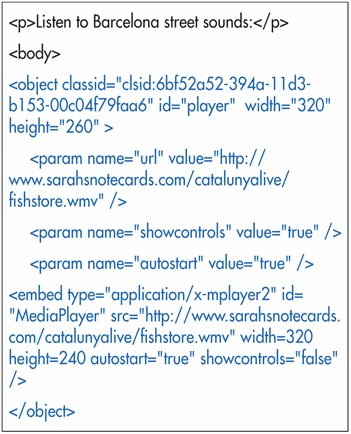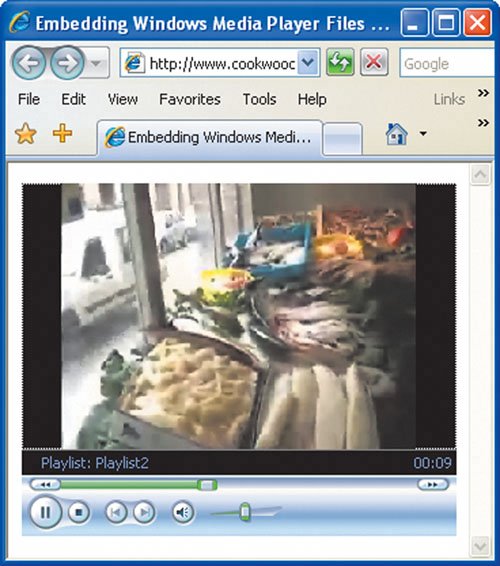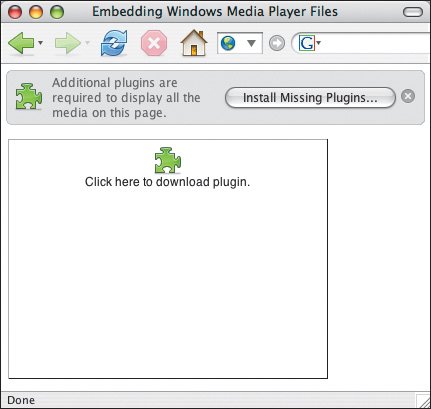Embedding Windows Media, Part 1
| Microsoft's suggested way of embedding Windows format movies and sounds on your Web page still requires the use of the old nonstandard embed tagif you want it to work in anything besides Internet Explorer for Windows. I'll show you how to embed it in a standards-compliant way on page 304. To embed Windows Media Player files:
Figure 18.44. If your visitor does not already have Windows Media Player on their computer, they will be invited to install it. Figure 18.45. Once the plugin is installed, the movie is displayed properly.
|
EAN: 2147483647
Pages: 340




 Tips
Tips